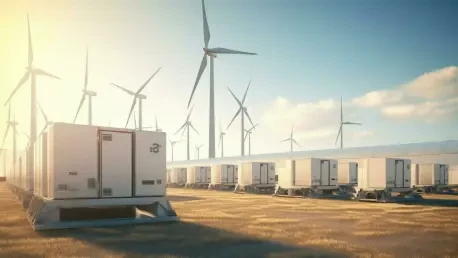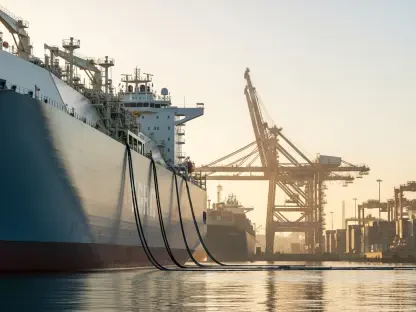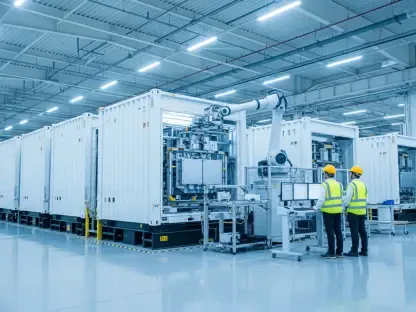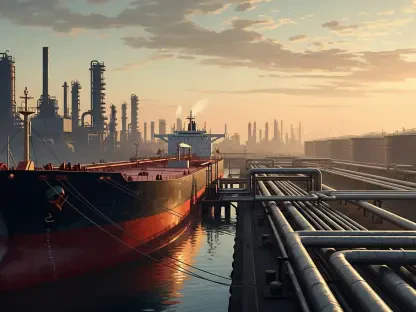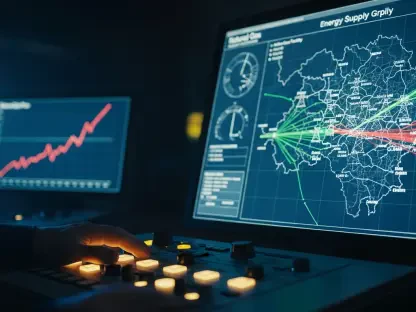Energy storage expert Christopher Hailstone joins us to provide insights into the complex landscape of U.S. energy policy in relation to President Trump’s trade policies. With extensive experience in energy management and grid security, Christopher offers a compelling look at how tariffs and trade uncertainties are shaping the future of energy storage, renewable manufacturing, and domestic battery production in the U.S.
How are President Trump’s trade policies currently affecting the U.S. energy storage industry?
The trade policies are causing significant disruptions within the U.S. energy storage industry. With the introduction of heavy tariffs, stock analysts are becoming wary of import-dependent original equipment manufacturers (OEMs). Developers are deferring investment decisions due to the lack of clarity on longer-term import duties, which is aggravating the present challenges in the sector.
How have tariffs impacted the development of merchant energy storage projects in areas like Texas?
Tariffs have heavily impacted merchant energy storage projects, especially in Texas. The dramatic increase in importing costs led to a slowdown in new project initiation. Developers with committed agreements can renegotiate their pricing, but merchant developers, who rely on fluctuating market conditions, might choose to delay their projects in hopes of a resolution in trade tensions.
Can you discuss the potential long-term effects of protectionist policies on U.S. battery manufacturing?
Protectionist policies might have a silver lining for U.S. battery manufacturing by boosting domestic production in the long term. They create an opportunity to develop lithium-ion alternatives and potentially revive local manufacturing. However, tariffs could increase the costs of locally-produced alternatives due to the need for outsourced materials, complicating the economy of scale.
What challenges do developers face when planning storage projects amid trade uncertainties?
One significant challenge is negotiating contracts amid a highly unpredictable environment. Developers face difficulties securing cost-effective supply chains when tariffs might drastically change. Plans are often made years in advance, so uncertainties can lead to stalled development and renegotiation of terms, impacting project calendaring significantly.
How are tariffs affecting the cost of deploying lithium-ion battery energy storage systems?
The tariffs have led to an upward push in deployment costs for lithium-ion battery systems. These increased costs could make American-produced systems less competitive, deterring new installations and potentially causing annual deployment rates to sharply drop in the coming years due to financial strains and policy uncertainties.
What actions are battery supply chain companies taking in response to import duties?
Many battery supply chain companies are no longer absorbing the import duties themselves in their pricing strategies. This shift has forced buyers to make tough decisions—whether to absorb the increased costs, delay deliveries until prices stabilize, or renegotiate pre-existing contracts under new cost structures.
How might tariffs influence the decision-making process for project developers and customers?
Tariffs compel both developers and customers to rethink their strategies. Decisions may hinge on the unpredictability of these tariffs, causing delays. Companies may prefer to wait rather than lock into agreements with variable pricing, accentuating the current hesitance in moving forward with new projects or orders.
In what ways can tariffs impact the merchant storage market, particularly within ERCOT’s territory?
In ERCOT’s territory, tariffs may freeze merchant storage activity, particularly for developers relying on rapid, market-driven timelines. This slowdown could be exacerbated by legislation favoring fossil fuel over renewable deployment, potentially freezing a substantial portion of U.S. stationary storage market.
What role might new legislative measures in Texas play in shaping the future of energy storage deployment?
Legislative initiatives in Texas, such as bills that favor dispatchable generation excluding batteries, could hinder renewable storage growth. These measures may lead to skewed resource development that prioritizes fossil fuels temporarily, presenting challenges for energy storage deployment in the state.
How is the Inflation Reduction Act influencing U.S. battery supply chain investments?
The Inflation Reduction Act has acted as a catalyst for increased investments in the U.S. battery supply chain, with substantial monetary credits attracting development, particularly in downstream processes such as cell and module assembly. Yet, actual production capacity remains a future goal due to lengthy construction timelines.
Can you elaborate on the current state of U.S. lithium-ion battery cell production capacity?
U.S. lithium-ion battery cell production capacity is still developing, despite investments sparked by recent legislation. Many new facilities have been announced but construction stretches over several years, leaving the U.S. with limited production capability for critical battery input materials.
What are the prospects for U.S. mining operations and their role in supporting battery production?
While the U.S. possesses ample raw materials for lithium-ion batteries, operational mining processes are complex and capital-intensive. Without long-term certainty on trade and tariffs, it’s challenging to instigate new mining projects, despite existing plans for exploiting significant lithium deposits.
How viable is the sodium-ion battery industry in the U.S., considering local mining resources?
The sodium-ion battery industry in the U.S. is potentially viable due to the availability of necessary raw materials domestically. However, the challenge lies in midstream processing and manufacturing components, which are currently heavily reliant on imports—highlighting a bottleneck that needs addressing for domestic viability.
What challenges exist in the midstream processing or component manufacturing of battery materials?
Midstream processing and component manufacturing face challenges due to the reliance on imports for processing capacity. This dependency hampers the growth of the local industry, despite having the raw materials, pointing to the need for a developed domestic supply chain to overcome these hurdles.
Could you explain the potential benefits of a more coherent U.S. energy security policy regarding tariffs?
A coherent energy policy could leverage tariffs to encourage the building of a homegrown supply chain, particularly for alternative batteries like sodium-ion, which align with domestic resource availability. Gradual tariff schemes may foster development and transition the market away from dependency on imported components.
Who are likely to be the beneficiaries of the current trade war impacts on energy storage?
Existing manufacturers with unused production capacity, especially those like Viridi, are likely beneficiaries. These companies have the flexibility to scale production in response to domestic demand increases, thus capitalizing on shifting supply chain dynamics due to restrictive trade policies.
How might countries like South Korea, Japan, and Vietnam play a role in the future of U.S. energy storage supply chains?
Countries such as South Korea, Japan, and Vietnam could become key alternatives to Chinese suppliers for U.S. energy storage buyers, offering lessened tariff impacts. Their willingness to accommodate trade dynamics positions them as reliable partners amid ongoing uncertainties.
What opportunities do countries with precursor reserves, like Indonesia and Latin American regions, offer to U.S. battery manufacturers?
Indonesia and Latin America have rich precursor reserves and processing capabilities that present valuable partnerships for U.S. manufacturers to source inputs. These regions could become significant contributors to reducing dependency on traditional suppliers while supporting the U.S.’s quest for diversified sourcing.
How might existing U.S. manufacturers with excess production capacity benefit from current trade policies?
Manufacturers with spare production capacity stand to benefit from trade policies, as they can increase outputs to meet rising domestic demand. These companies have a unique position to capitalize on changing requirements and expand their market share in light of unpredictable international trade landscapes.
What is your forecast for how tariffs will influence American renewable manufacturing in the coming months, according to industry experts?
Tariffs may create a complex landscape for renewable manufacturing. While they could stimulate some degree of domestic industry growth, unpredictable tariff measures make reshoring plans precarious. Industry experts anticipate that manufacturers might cautiously approach investing in extensive reshoring, balancing benefits with risk management.
